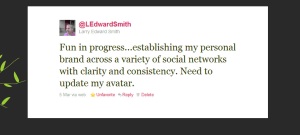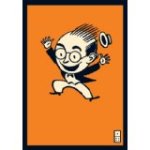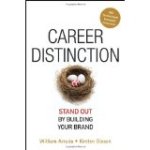Not often thought about is how your favorite brands help you meet intrinsic emotional needs for love, safety, security, comfort, acceptance, and relationships with other people.
Why do some people own a iPhoneTM vs. an AndroidTM, ? Why choose StarbucksTM over Dunkin DonutsTM? HummerTM vs. Ford BroncoTM? Each of these products can fundamentally meet our extrinsic needs.
I like to start my day with a cup of coffee. Perhaps I am mildly addicted to caffeine! I need a smart phone to conduct my daily affairs and stay in touch with friends and family and even get some work done on the go. I prefer to drive a sports utility vehicle since I need to haul around stuff as well as people given the lifestyle that I have. Brands carry with them highly distinctive value propositions that their owners identify with consciously and unconsciously to meet their even more important, intrinsic, emotional needs.
Apple iPhones represent sleekness and functionality on the cutting edge of technology. They have a “cool” factor that meets peoples needs for acceptance. iPhone is “cool”, therefore, how cool am I? You don’t even need to see my phone because just walking around with my distinctive white headphones is all you need to see and you will know that I am “cool”.
Starbucks has melded high quality, distinctive, and bold coffee concoctions with a need for people to come  together in a shared experience on a deeply personal level. It meets our emotional need for comfort and connecting with others with a level of security that is literally felt by consuming one of our favorite drinks. Even when we are not in the bistro, that familiar ambiance is carried forth by the white paper cup ensconced with their universally known green logo, white SoloTM cap, and the tell-tale corrugated heat shield.
together in a shared experience on a deeply personal level. It meets our emotional need for comfort and connecting with others with a level of security that is literally felt by consuming one of our favorite drinks. Even when we are not in the bistro, that familiar ambiance is carried forth by the white paper cup ensconced with their universally known green logo, white SoloTM cap, and the tell-tale corrugated heat shield.
Automobiles represent some of the most obvious branding efforts. With status symbols tied to their purchase price, and the emotions that they ignite within their owners, but also of bystanders who can make some assumptions about their owners. Hummer is the brand chosen by people who want to dominate any situation. They are owned by financially successful, type-A personalities with a strong competitive spirit. These folks are not fully satisfied emotionally until you know that about them and their Hummer will effectively communicate all of this to you without having ever met them.

The essence of branding is an alignment of a brand’s core values or projected values with the values we hold or seek out on an emotional level. This nexus of values will propel us to either own a brand or want to own it.
What about you? What are your core values and intrinsic characteristics that draw people to you and distinguish you from others? What skill sets have you developed? What are your strengths and weakness? What emotions do you stir in others? Our values, skills, and strengths, as well as our weaknesses are some of the attributes that form our persona, our brand.
In the workplace, people are drawn to us primarily on an emotional level then proceed to rational qualities such as degrees held, work experience, skills sets, and technical expertise. Rational qualities are really fundamentals. You can’t be an engineer for example without the proper degrees and perhaps certain technical certifications. Our peers, all the people we are in competition with daily, have very similar rational qualities. Emotional qualities distinguish us from everyone else. Our personality, core values, passions, interests, style, and many other facets of our lives form the emotional qualities that really carry the weight of our brand. Of brand You!
Brands live in the minds of the consumer. Our personal brand lives in the minds of our key audience. If we are entrepreneurs our key audience is the niche of people that can benefit from our product. If we are trying to get a particular job or promotion, our key audience are the people making the decisions about whom to interview and whom to hire. It is therefore important to understand how our key audience sees us. The best way to get that information is to ask the people we work and live with daily.
There are some excellent assessment tools available from qualified career coaches. The one that I use is the 360ºReachTM, a comprehensive, 360 degree assessment survey that is emailed to your peers, co-workers, bosses, friends, and family. It was developed by personal branding guru, William Arruda.

Here you can watch a video where William explains the process. He is also author of a best selling book Career Distinction: Stand Out By Building Your Brand.
Unlike many 360 degree assessments surveys that focus on leadership skills, and are restricted to the workplace, 360ºReach focuses on brand attributes and includes the audience you select. It gives you feedback on brand attributes, personas, leadership skills, and strengths and weaknesses as seen by the people in your life. A fun, projective exercise is included that you select. It asks responders to consider the attributes of brands of cars, cereals and other things that would help to describe you. It is powerful for seeing patterns within yourself and understanding yourself better. It is terrific for developing your brand over time by thinking about what attributes you want to key in on moving forward, setting goals, and taking assessments periodically to measure changes.
Once you have gathered the information that underscores your brand you are ready to craft powerful messaging that expresses your brand. Your brand can then be conveyed in all the right channels including traditional resumes, social resumes, social network profiles, like LinkedIn, Facebook, and Twitter, your own web site, and interviews.
When asked what he thought the reason for his lead in the early poles in the run up to the 2012 Republican  primary, Donald Trump answered:
primary, Donald Trump answered:
“My message is a better message than the other candidates”.
A powerful message can be a single sentence that tells your story and defines your distinctive value. In the book, Drive : The Surprising Truth About What Motivates Us Author, Daniel H. Pink asks two questions every brand needs.
The first question: What’s your one sentence? As an example: Abraham Lincoln’s one sentence could be “ He preserved the Union and freed the slaves. FDR’s one sentence could be “He lifted us out of the Great Depression and helped win a world war.” Watch this YouTube video from Daniel Pink’s website. People recorded 15 second clips telling their one sentence.
The second question: Was I better today than yesterday? Pink suggests asking ourselves this question and consider the answer every day. If we are passionate about improving our brand, this question motivates us to take action every day and make small, but meaningful personal improvements. Over the long run, we are fulfilling our potential and strengthening our personal and professional brand. The result is distinction and standing out from the crowd.
Your distinctive brand becomes the foundation for every choice you make moving forward. It focuses your energy efficiently and productively on your core values. Choices are made with the following premise:
Actions that support your brand should be chosen; actions that do not support your brand, avoided.
Branding, as a powerful tool, is well suited for building a following for your expertise among colleques, employers, prospective employers, people in your professional network, or attracting customers to your business. Distinctive brands are sought out. Your audience will connect with you on an intrinsic, emotional level. Now, you are taking charge of your career.
Photo credits: iPod sillouette: http://artcodesign.com/index.php?a=33, Starbucks Cup: Larry Smith, Gulls: Larry Smith, Hummer H2: Unknown, Donald Trump: Larry Marano/Getty Images.
Posted in
Be Authentic,
Build Your Bona Fide Brand and tagged
360Reach,
Brand You,
brands,
career,
Career Distinction,
Daniel Pink,
Drive,
Hummer,
iPhone,
personal branding,
Starbucks,
Tom Peters,
values,
William Arruda |






















